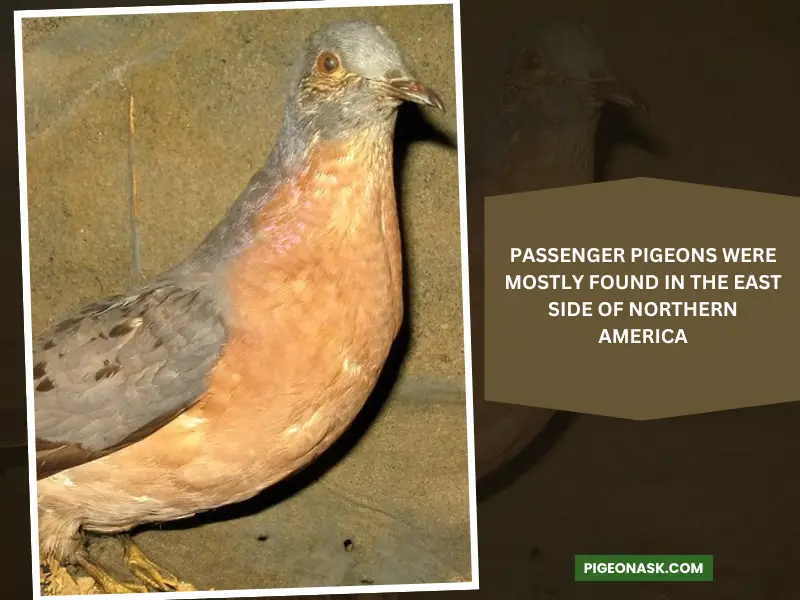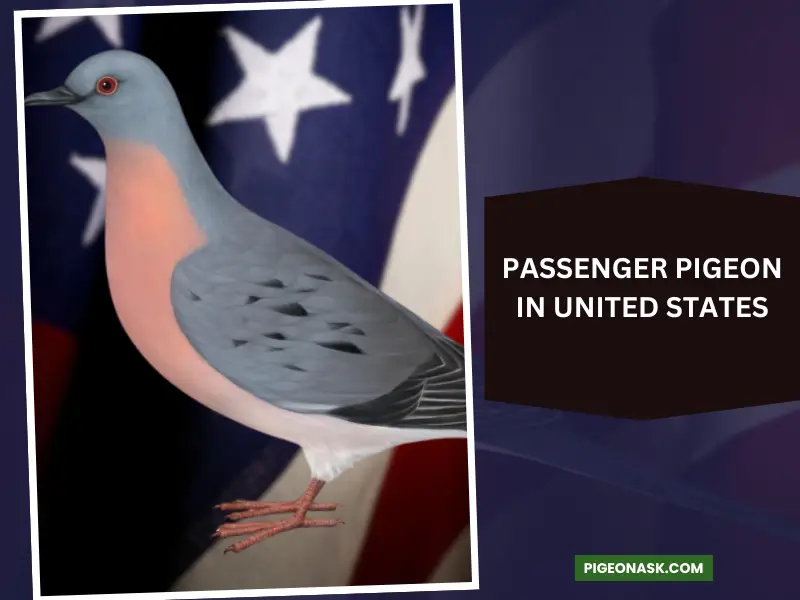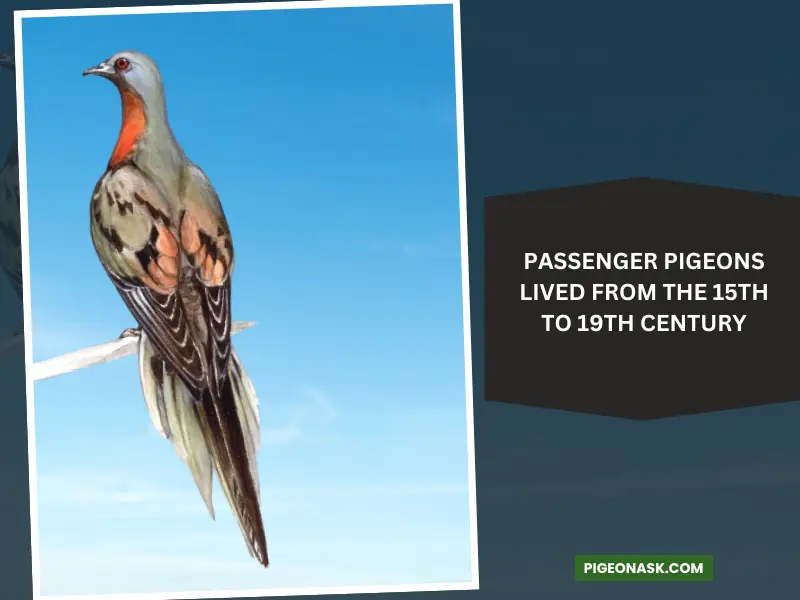Where Did the Passenger Pigeon Live?
Passenger pigeons were once one of the most common pigeon breeds that had their habitat in different areas across North America. But due to hunting, deforestation, and habitat loss, their population decreased and eventually, they became an extinct species.
So, where did the passenger pigeon live all those years? The main habitat of passenger pigeons was in several states of the US. They lived near forest areas where there were rocky mountains, hardwood trees, and water sources like lakes.
In this article, we have tried to provide all the information about the nesting areas of passenger pigeons so that you can know where this extinct breed lived centuries ago.
Looking for more articles about pigeon habitats:
Where Were the Passenger Pigeons Found?
During the 18th century, passenger pigeons were mostly found in the east side of Northern America. This region was considered as their primary habitat where a large population of them lived there scatteredly.

Besides, some of these pigeons also lived from the Great planes to the southern part of Canada, northern part of Mississippi and east Atlantic coast. But they migrated within these areas for searching shelter and food.
A huge number of these pigeons were eaten by humans, which worked as a driving force for them to migrate to different regions from northern America.
After migrating and escaping from captivity, they were found in some parts of Scotland, France, and Ireland.
You can read our article about “Pigeon Habitat“
Did the Passenger Pigeon Live in Any Specific Type of Habitat?
Though passenger pigeons were commonly seen in different areas, they had specific types of habitats with certain environmental requirements. Here we have listed the types of natural habitats where passenger pigeons lived in flocks and groups.

1. Deciduous Forests
These pigeons had their habitat in deciduous forests near the eastern part of America. These forests have beeches and oak trees that are highly suitable for making nesting areas for pigeons.
As passenger pigeons stay in flocks or groups, they tend to fly to the branches of these trees at night for roosting purposes.
2. Swamp Areas
During winter, passenger pigeons generally migrate to the nearest swamp areas and make these areas a temporary habitat. As the temperature of these areas remains relatively higher than deciduous forests, they live comfortably throughout the whole winter.
These areas have pine and alder trees which are considered favorite roosting places for passenger pigeons.
3. Hardwood Forests
Basically, hardwood forests are situated on high mountain and hill slopes in Northern America. These forests were suitable habitat for passenger pigeons during colder months as the rainwater of these areas get washed off quickly and prevent the environment getting moist and damp.
In these forests, passenger pigeons made their nesting sites in the higher branches of large trees including yellow birch, basswood, red oak, and red maple.
Where Was the Passenger Pigeon Found in the United States?
The main habitat of passenger pigeons was found across 25 states in the United States.
These states included the Great Lakes, east of New York and North America, near the east side of the rocky mountains. In these regions, approximately 3-5 billion of these pigeons were discovered.

During colder months in the United States, their habitat was within the range from Arkansas and Tennessee to North Carolina, including the regions of southern Pennsylvania and Connecticut.
Passenger pigeons were occasionally found in some regions located near the southern part of the Gulf Coast States, southern Texas, and northern Florida, mainly in the upland areas and hardwood forests.
When Did the Passenger Pigeon Live?
Passenger pigeons were first recorded by a French explorer during the 15th century. Being hunted by Americans and Europeans after European colonization, their population started decreasing by the 19th century.

So, it is assumed that passenger pigeons lived from the 15th to 19th century. During the 18th century, these pigeons were pretty rare as most of them were slaughtered or migrated to other regions by escaping captivity.
The last passenger pigeon died on September 1, 1914, being captivated in the Cincinnati Zoo. It was named Martha and had a long lifespan of about 29 years. Until the 19th century, passenger pigeons rarely existed in this world, and they went extinct after the year 1914.
Frequently Asked Questions
01. Why were passenger pigeons hunted?
Passenger pigeons were largely hunted by humans as an easy source of protein for common people. Besides, they were also used in trap shooting as live targets and were sometimes hunted for producing fertilizer for agricultural purposes.
02. Why are they called passenger pigeons?
These pigeons were named passenger pigeons because of their tendency to migrate across the sky frequently. Passenger pigeons migrate in flocks to nearby warmer areas during the winter season by flying large distances up to 300 miles.
03. What did passenger pigeon looked like?
Passenger pigeons had a slender body with red eyes, black and narrow beaks, long tail, pointed wings, and clean red feet. They had strong and powerful breast muscles that provided them strength, speed, and maneuverability for flying.
Conclusion
Though passenger pigeons were native North American species, they also had their habitat in some regions of Canada, Mississippi, Oklahoma, and Georgia. Excessive hunting, communal breeding and commercial exploitation of these pigeons caused their population decline and eventual extinction.
Hopefully, this article could help you to know the natural habitat, nesting, and roosting sites of passenger pigeons who once survived with their large population in different states of the US.
Image Credits:
- Shutterstock.com/photos
- Canva.com/photos
References Links:
- Biologicaldiversity.org/species/birds/passenger_pigeon/natural_history.html
- https://www.britannica.com/animal/passenger-pigeon
- https://www.cs.mcgill.ca/~rwest/wikispeedia/wpcd/wp/p/Passenger_Pigeon.htm
